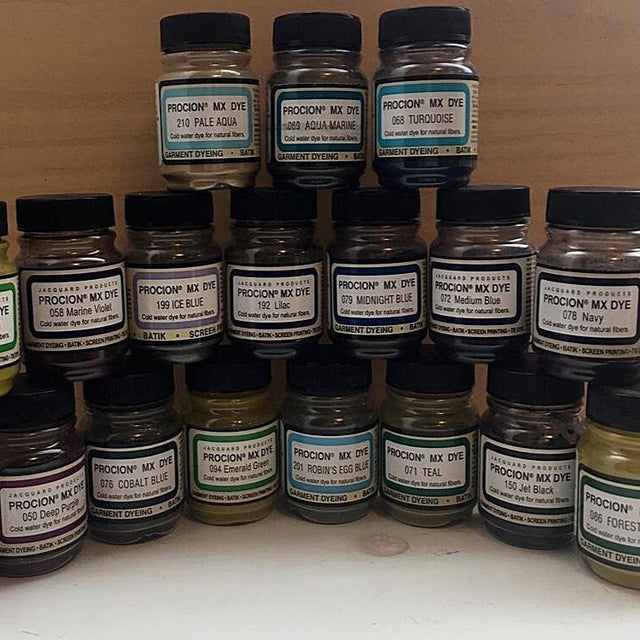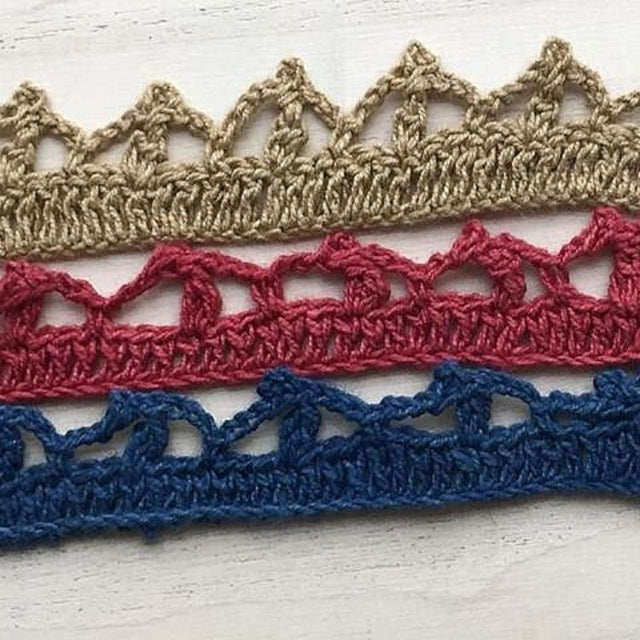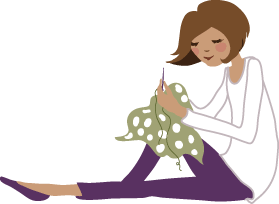DISCONTINUED COLORS
Weight: 2/3 oz.
Although this isn't a plant based dye, fiber reactive dyes are the next best thing. Most Reactive dyes are approved by the Global Organic Textile Standards with their clean dye procedures and low heavy metal contents. It will dye all cellulose (plant) fibers such as cotton, linen, jute, ramie and sisal. It's a very versatile dye; perfect for immersion dyeing, tie dye, batik, airbrush, garment dyeing, screen printing, spatter painting, gradation dyeing and more! Usually, one 2/3 oz. bottle will be enough for more than 1-pound of fabric.
Check out this neat tie-dye project on our blog
- Yards per pound: 4,500, Total yards in package ~2,250
- Sold in 1/2 pound cones
- Sett: 18-26 epi
Width: 1.5cm, #15
Content: 100% organic cotton
Sold by the 3m bundle
This beautiful hand-crocheted lace is made with the Godavari Delta Women's Lace Co-operative which provides equitable employment to women artisans through Fair Trade production. The designs are based on historic patterns and are made from organic cotton. Each card holds 3 meters of lace and is available in five naturally dyed colors. Approx. width = 1.5 cm. Please note: expect some variation in size due to this lace being made entirely by hand.
Reviving historical practices, with contemporary environmental thinking and current scientific advances, trimmings are dyed by BioDye in India, with a closed loop system. BioDye uses dyes and mordants that are environmentally safe. Dyestuffs are obtained from sustainable sources such as leaves, fruits, and regenerative stems. Waste materials are biodegradable, with compost and irrigation water used to grow dye, medicinal plants and food crops for in-house consumption. Through a collaboration with village women's groups, dyeplants and firewood are collected from renewable plantations and used in fuel-efficient stoves in the dye house. BioDye also work with local farmers to support the re-introduction of indigo in agriculturally depleted regions, thereby contributing to sustainable livelihoods.
*If you would like to see what plants were used in the dyeing process for each color, click here.







































 Same day shipping for most orders
Same day shipping for most orders Questions? Call us toll-free at: 1-855-SEW-PURE
Questions? Call us toll-free at: 1-855-SEW-PURE
